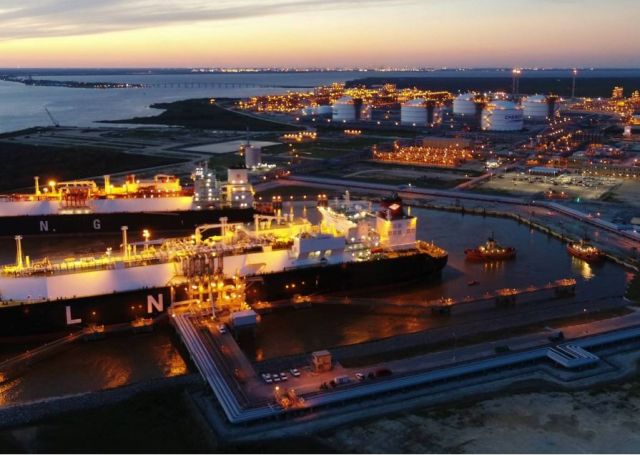
U.S. LNG export capacity is expected to more than double by 2027, according to the EIA, as export projects along the Gulf Coast and western Mexico come online. (Source: Cheniere)
Cheniere Energy has scaled back expansion plans for the company’s Sabine Pass LNG facility, dropping the number of LNG drive trains from three to two for a project scheduled to be in service by 2031.
Cheniere, the largest LNG producer in the U.S., notified the U.S. Federal Energy Regulatory Commission (FERC) of the change in a draft report filed in mid-November. The company said the change was made for the sake of efficiency and will not result in a large production cut from the company’s original plans.
“We are not reducing our overall growth ambition at Sabine Pass,” a Cheniere spokesperson told Hart Energy via email. “We continue to progress the commercialization of the expansion – an up to approximately 20 [million tons per annum] increase in capacity, inclusive of estimated debottlenecking opportunities — and we look forward to advancing on our financial, regulatory and construction milestones to have it producing LNG by the end of this decade.”
Major LNG players in the U.S. are in a race to add export capacity, which is currently capped nationwide at about 11.4 Bcf/d, according to the U.S. Energy Information Administration (EIA). That chokepoint comes amid record U.S. natural gas production and strong LNG demand in Europe and Asia.
U.S. LNG export capacity is expected to more than double by 2027, according to the EIA, as export projects along the Gulf Coast and western Mexico come online, four years before the Sabine Pass expansion project is slated for completion.
According to Cheniere’s filing with the FERC, the two new Sabine Pass trains will each have an LNG production capacity of 7 million tons a year (MMtpy). Originally, the company planned to install three trains, each with a capacity of 6.5 MMtpy.
The Sabine Pass facility is the largest in the U.S., able to produce 30 MMtpy of LNG. After its sixth drive train came online in 2022, the facility became the first terminal in the world capable of accommodating three LNG tankers simultaneously.
With the addition of two new trains, two new storage tanks and a new 5.3-mile pipeline feeding additional natural gas to the project, Cheniere disclosed in the FERC filing that it expects the facility’s export capacity to reach 49.84 MMtpy.
“We are focused on long-term and durable value creation,” Cheniere spokesperson Bernardo Fallas said. “As such, we are continuously optimizing the configuration of this brownfield expansion to maximize its economics, scale and speed to market.”
Cheniere has already lined up a new supply agreement with German chemical company BASF to supply up to 800,000 tons a year. The deliveries are expected to start in 2026, prior to the opening of the expansion, and Cheniere will use other sources for the first shipments.
Recommended Reading
Deepwater Roundup 2024: Offshore Africa
2024-04-02 - Offshore Africa, new projects are progressing, with a number of high-reserve offshore developments being planned in countries not typically known for deepwater activity, such as Phase 2 of the Baleine project on the Ivory Coast.
E&P Highlights: March 25, 2024
2024-03-25 - Here’s a roundup of the latest E&P headlines, including a FEED planned for Venus and new contract awards.
E&P Highlights: April 1, 2024
2024-04-01 - Here’s a roundup of the latest E&P headlines, including new contract awards.
Deepwater Roundup 2024: Americas
2024-04-23 - The final part of Hart Energy E&P’s Deepwater Roundup focuses on projects coming online in the Americas from 2023 until the end of the decade.
Sangomar FPSO Arrives Offshore Senegal
2024-02-13 - Woodside’s Sangomar Field on track to start production in mid-2024.




